Welcome to the first week of October, which brings longer days and (we hope) lighter spirits. Despite the state of things, there are still abundant reasons to feel encouraged. On we roll!
This roundup is brought to you by our largely volunteer crew. If you’d like to support our work and enable more of it, you can make a donation here. We also welcome topical and timely guest posts – if you have one in mind, drop us a line!
The Week on Greater Auckland
- On Monday, Connor asked: is Simeon Brown our least worldly Minister of Transport ever? All signs point to yes.
- On Tuesday, Patrick revealed the ‘stealth mode’ – the humble bicycle! – that’s bringing as many people to the city centre every day as the ferry system does, and why it should be funded accordingly.
- In timely fashion, Wednesday’s cross-post from Bike Auckland asked how Auckland Council plans to solve the funding shortfall for cycling – and offered tips on encouraging councillors to do the right thing.
- On Thursday we looked back at how when the streets went quiet during lockdowns, it made us realise how much public space is dedicated to moving cars around.
Events
It’s Biketober! Spring has sprung! Dust off your wheels and join one of the many community-led activities taking place across the isthmus as part of this annual festival curated by Bike Auckland. Check out the calendar of events here. Love that this bit of spring goodness is still going strong, eight years on!
Urban Nerds AKL is meeting on Monday 7 October at Good George, North Wharf from 4.30pm onwards, with special guest Dr Stu Donovan.
 And next Thursday 10 October, the Fabians are hosting a seminar: Transitioning to an Energy-Secure Future, with speaker David Keat addressing “the challenges facing New Zealand in implementing renewables technology, repairing the electricity sector, addressing climate change and ecological degradation, and tackling the infrastructure deficit.” The event runs from 6.30pm – 8pm at the Trades Hall on Great North Road.
And next Thursday 10 October, the Fabians are hosting a seminar: Transitioning to an Energy-Secure Future, with speaker David Keat addressing “the challenges facing New Zealand in implementing renewables technology, repairing the electricity sector, addressing climate change and ecological degradation, and tackling the infrastructure deficit.” The event runs from 6.30pm – 8pm at the Trades Hall on Great North Road.
Ongoing fallout of Government’s transport decisions
As we noted a couple of weeks ago, the government’s decision to gut funding for safety and active modes isn’t just harmful to communities, it’s political self-harm, with many vital small local projects (and associated ribbon-cuttings and community gratitude) at stake.
RNZ’s Nine to Noon reports that councils across the motu are discovering that many vital local projects are now in limbo:
More than 300 applications for speed bumps, raised crossings and other traffic calming measures will not progress after the government withdrew the funding available to local councils.
…..
Pembroke Primary School in Oamaru had plans confirmed late last year to have traffic lights and a pedestrian crossing on nearby State Highway One moved for safety improvements.
But principal Brent Godfrey said as soon as the new government was elected, those plans were cancelled.
Due to safety concerns, Godfrey said the school had employed someone to stand at the crossing for “many years” to stop traffic and help the children cross as drivers struggled to see them.
One student had even been injured on the crossing.
The Manawatū Times reports that the Horizons region is “scrambling for money” to cover its transport plans, including basic stuff like road repairs and fixing footpaths. And Auckland’s road safety education programmes – which include such back-to-basics things as walking school buses – are facing the chop.
The head of the European Transport Safety Commission spoke to RNZ’s Morning Report on the shock with which Simeon Brown’s speed regression is being received overseas. (The new speed rule can be seen here).
When it comes to the European Union more and more European cities have recently reduced the urban default limit to 30km per hour and that includes cities like Paris, Brussels – where I live – and the Amsterdam. If you look more north, cities like Copenhagen, Stockholm, Oslo have also reduced their speed limits to 40, 30 km per hour and there are even big countries like Spain or Wales where the speed limit in urban areas for the whole country is 30 km.
Results show that in the cities that have reduced speed limits, well road safety has certainly improved but also we have had reductions in toxic emissions, noise, crashes and what is very important and can seem counterintuitive, journey times were largely unaffected.
Meanwhile, the benefits of the now former policies continue to be felt. In September there were 16 deaths on our roads, the second lowest for a September on record, something that has been a similar pattern to most of the rest of the year.
That shows a couple of things:
- It is the lowest number of deaths on our roads over a six-month period on record.
- It brings the total over a 12-month period down to 289 deaths, still above the record low of 253 set in the year to December 2013.
- However, because our population has increased by nearly 900k since then, we’ve now reached the record low for the number of deaths on our roads per 100,000 people, with a total of 5.4. However that is still double the rate of some of countries quoted incorrectly by the Minister on the weekend.
…and housing decisions
Just when we’re finally starting to make progress to address a decades long housing crisis it’s a tragedy that the government stopped so many homes from being built. This terrifying map highlights all if the “stalled, downsized and cancelled Kāinga Ora developments (over 10 homes) with information on how many are on the waitlist in that area“.
A quick count of the Auckland sites suggests over 1,600 potential homes have been impacted:
Plans to take Auckland transport planning off Auckland Transport
It appears the Mayor’s push for changes to the status of Auckland Transport to reduce its ‘independence’ is going to move forward.
Auckland’s mayor and the Minister of Transport agree – the reins need to be tightened on Auckland Transport.
In a 19 July letter from mayor Wayne Brown to Simeon Brown released through the Official Information Act, the two found agreement on reform of transport governance.
Simeon Brown is minister of transport, minister of auckland, and minister of local government.
In the letter, Wayne Brown says they “agreed that the culture of independence pervading Auckland Transport is unacceptable, and that Aucklanders deserve better”, and that Auckland Transport should be “purely a delivery agency”.
Work is to be done on options to reform Auckland Transport.
We’ll need to wait to see exactly what is proposed, but if Auckland Transport actually used its independence to push forward with good, evidence-based decisions rather than stopping projects to relitigate them every time someone complained – Great North Rd is a great example of this – then perhaps the public wouldn’t be so upset with them.
NW Rapid Transit public feedback
In August and September, Waka Kotahi consulted on the next steps for the Northwest busway. They’ve now released a summary of the feedback they received. They note:
Overall, the sentiment from these sessions was very positive with high levels of support for the project.
Perhaps more interesting is that making it easy to get to busway stations by local bus was the number one request.
From here, we will be incorporating your feedback into the next stage of our investigation.
We expect to share more information about the emerging preferred option for the alignment and station locations early-2025.
What’s the opposite of ‘sick and tired’? Anyway, that’s us, re cycling
Apparently Mark Twain, visiting Christchurch in 1895, described it as as a city “where half the people ride bicycles and the other half are kept busy dodging them”. As this great roundup via Stuff shows, Ōtautahi is so back. And so are many other cities.
Cycle counters in Christchurch show the number of people biking in and out of the city has been on the rise.
One counter, near the botanic gardens, had an average of 1,307 cyclists pass it per day in August – and that was only in one direction.
In July 2024, the number of cyclists counted across the city was 13% higher than it was in July 2023.
…
Auckland Transport reported that cycle movements in January 2024 increased by 25.6% compared to January 2023.
Data from Bike There, an organisation that installed bike counting devices throughout Wellington, showed the number of people commuting by bike in Wellington had more than doubled since it started its annual morning-peak cordon counts in 2000.
And of course, these actual stats fly in the face of the Minister of Transport’s repeated claim that New Zealanders have suddenly fallen out of love with the freedom bicycles offer. He’s just wrong.
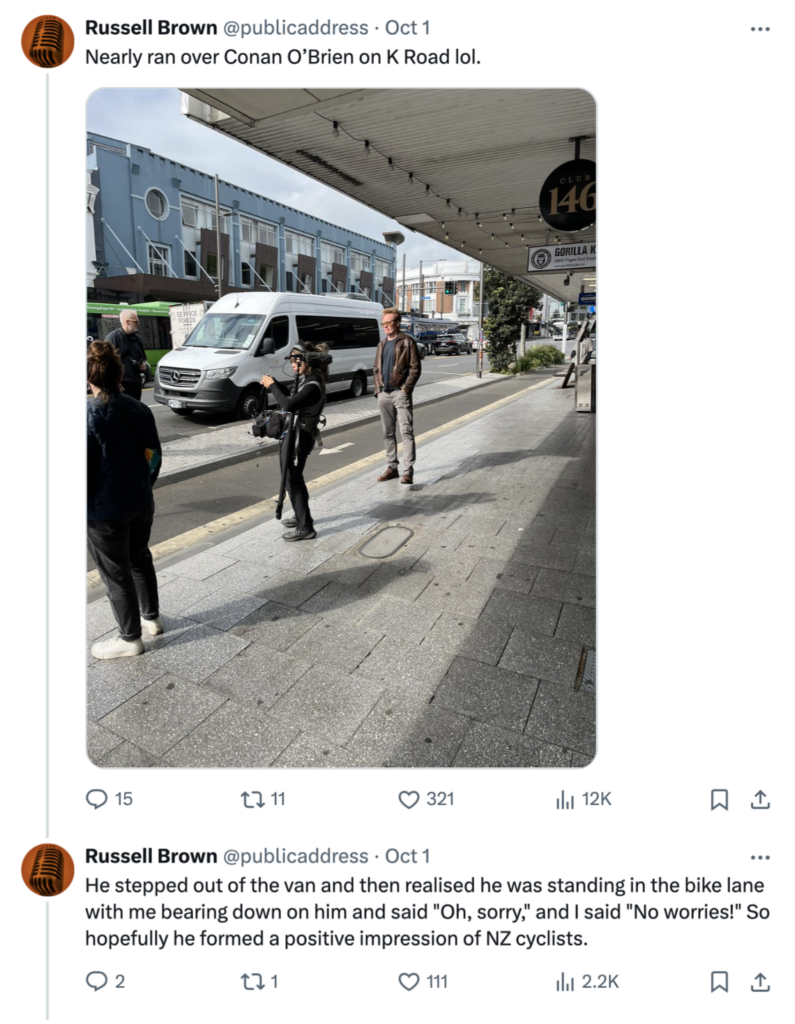
Footfall up – and traffic down – in Dublin
As reported by RTE, Ireland’s National Public Service Media,
Private car use in Dublin city centre has dropped significantly and public transport journey times have reduced along the quays since the Dublin City Transport Plan came into force last month.
Public transport use has increased and footfall is also up in Dublin city centre since bus gates were introduced on sections of the quays just over four weeks ago.
15 minute city map
The idea of 15 (or 20) minute cities has seen a lot of discussion in recent years, and also been subject to some bizarre conspiracy theories. A team of researchers in Rome have come up with a tool to try and try and show this:
The 15 min City platform lets you explore how much worldwide cities are close to this ideal, by merging open data about venues within cities, population grids and routing algorithms. With 15 min City, you can check which activities or places are accessible to a neighbourhood on foot and by bike, and compare it to other urban areas.
It even includes parts of Auckland.
Four in 10 London children stopped driving and started walking to school a year after the city’s clean air zone went into effect
As Grist reports, reducing the number of polluting cars on the road turns out to be good for children in unexpected ways, beyond the obvious benefits to their lungs:
In 2018 — the year before London’s [clean air] rule took effect in the center of the city, and five years before the zone encompassed its entirety — researchers at the University of Cambridge and Queen Mary University saw in the impending policy an opportunity to conduct a natural experiment. They recruited children aged 6 to 9 and their families in central London and in Luton, a small city to the north, for a multi-year study to investigate how the program might affect a child’s health. Though research focused on understanding how lightening a city’s pollution load shaped the way young lungs develop, participants completed questionnaires alongside their annual health assessments. The responses allowed researchers to glean insights into their subjects’ activity levels, mental health, and other ancillary outcomes.
In the first of many papers expected from the study, the researchers found that, a year after the ultra-low emissions zone took effect, 2 out of every 5 London students in the study had switched from “passive” to “active” ways of getting to school. So instead of being chauffeured to school by their parents, the students started walking, biking, scootering, or taking public transit. On the other hand, in Luton, which acted as a control group, 1 in 5 made the same switch to modes that got them up and active, but an equal proportion switched to passive travel. But in London’s ultra-low emissions zone, shifting to driving was rare.
Gorgeous George St
Along with the free buses put on by Council to facilitate access, Dunedin’s downtown makeover had a cameo role in the reporting of the 35,000-strong march for the hospital last week.
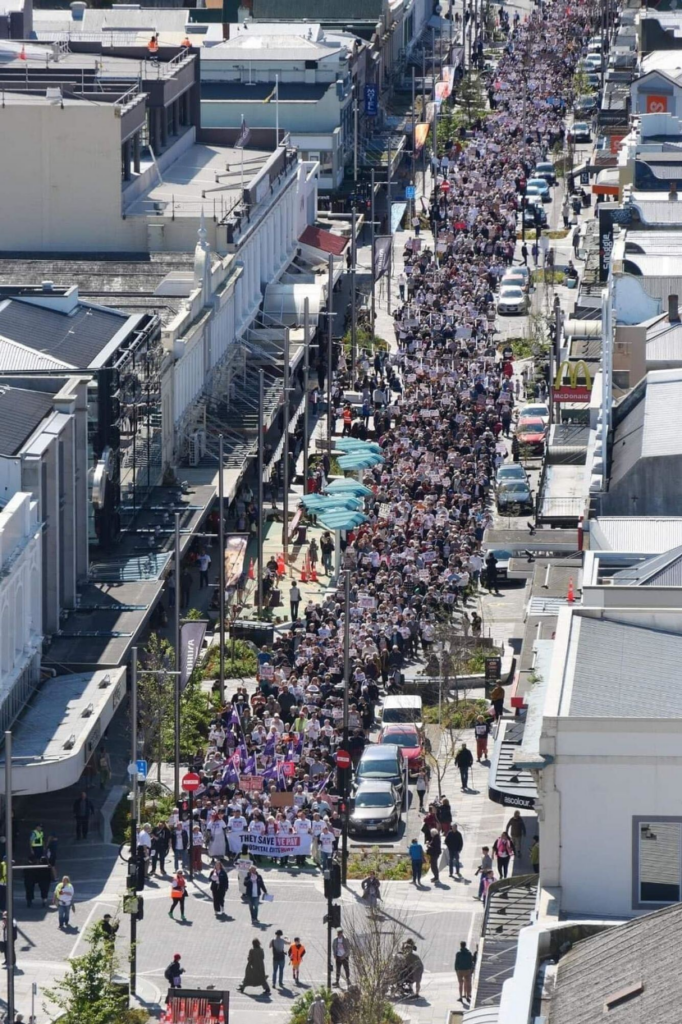
https://bsky.app/profile/jdeheij.bsky.social/post/3l5gfpwcret2l
The week in flooding
Sticking in Dunedin, our thoughts go out to our southern friends and we hope you are all keeping safe (at the time of writing this post we’re not entirely sure what the outcome will be – the morning headlines describe slips and flooded streets and evacuations, and more rain yet to come).
Further north, file under “that didn’t last long”. Last week Transport Minister Simeon Brown celebrated (and took credit for) the opening of the new SH1/SH29 roundabout which was started by the last government. Yesterday, it was already starting to wash away.
NZ Transport Agency Waka Kotahi (NZTA) is advising that emergency road repairs are underway at the intersection of SH1 and SH29 in Piarere following heavy rain.
The roundabout opened to traffic on Tuesday 24 September with two temporary approaches in place.
The surface of these approaches has deteriorated as a result of recent weather, requiring urgent repairs.

Meanwhile, this installation from 2018 in the Outer Hebrides uses sensors that are activated by the tide to provide a visual reference of future sea level rise.
Good energy corner
An inspiring story of just transition: the closure of the UK’s last coal plant, and how all the workers have been successfully redeployed to high-quality employment.
Speaking of positive transitions: power-account holders in the isthmus should keep an eye out for your voting papers for the Entrust election, which offers a chance to move this powerful community asset into the 21st Century, under the leadership of More for You, Better for Auckland. As Patrick wrote, this team offers a far more sustainable, resilient and visionary plan for empowering the community than those who’ve had a grip on the trust for 30 years. Be sure to vote – the power is yours!
Be the change – good reads
A timely op-ed by Marie Guerreiro of All Aboard Aotearoa, on how Auckland Council’s Transport Emissions Reduction Pathway is still the strongest map for making our city a nicer place to be, as well as tackling our part of the climate puzzle:
We have only built for one mode of transport in Auckland for decades, and it’s led us to congestion, higher emissions and a less connected city.
The Transport Emissions Reduction Pathway (TERP) is a different way of doing things that leads to healthier people, less congestion, more connected communities and more choices for how we travel. It’s a way of doing things that is possible in the next five years, not far into the future, all by changing the way we think. It’s why the decarbonisation of transport is one of the easiest ways to achieve our climate goals, because it makes our lives better.
If we want Auckland to be the city we want, one where people can choose how they travel, in safety, and without congestion, the Terp is how we get there. And it is Auckland’s plan right now, we just need to embrace it.
And an encouraging piece in Stuff from Alec Tang (formerly Chief Sustainability Officer at Auckland Council, now with KPMG), on how in our current climate, the fast-track isn’t necessarily a shortcut to success. This bit resonates:
You can be the person who inspires change
None of this change is easy. If it were, we would have done it already; but we know that passionate individuals can drive massive change within their businesses. You can be the individual that initiates or speeds up positive change by encouraging open and honest reflection and challenging some long-held beliefs on ‘how things are done around here’. It’s critical that we all challenge our mental models: our current ways of doing business are not sustainable. The world that shaped our current thinking no longer exists. Ask questions; be humble; expect pushback and fatalism; embrace tension and uncertainty.We’re standing at a tipping point. Businesses will operate differently in future. You get to choose whether your business navigates a successful path to that future. Or you can wait to get pushed, unprepared and unwilling, into a new operational model. One of those options sets your company up to be adaptable, resilient and profitable. The other option might save you money right now, but in the long run it could cost you everything.
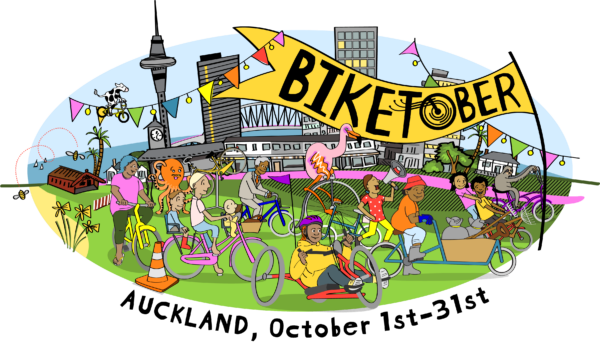

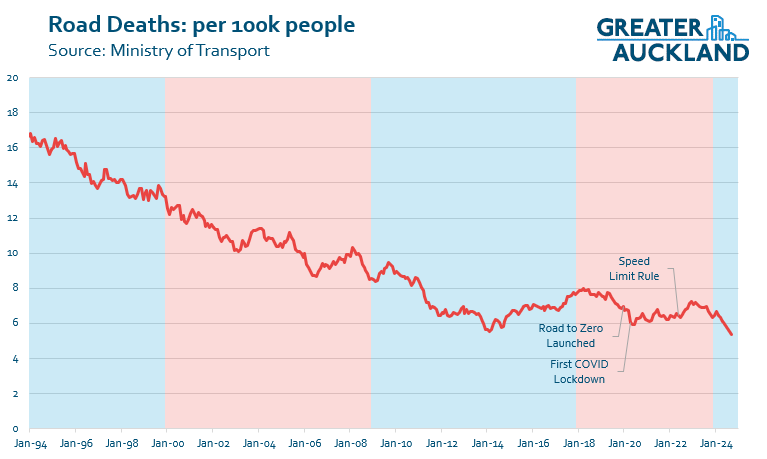

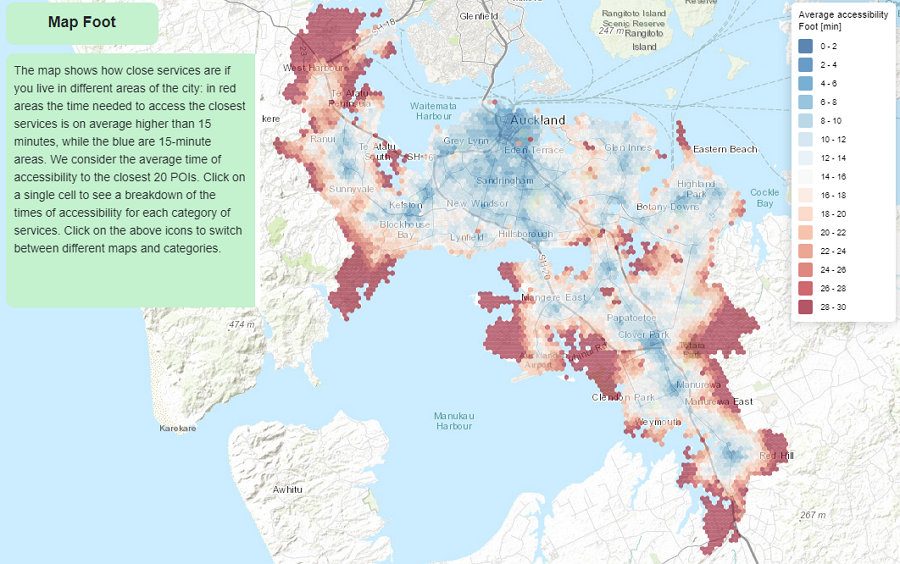


 Processing...
Processing...
I had a feeling the “walking” part of the walking and cycling budget, was going to be adversely affected,seems to be the case. The footways to Cornwall Park, Onehunga side,are in a poor state,and result in the bizarre situation ,where driving to the park to walk ensures.
Once at the park,there is a sense of calmness,although,l get the feeling that the park is being used as a hospital carpark. Also observed some bemused pedestrians on Greenlane Rd,on non existent footpath,and the world’s skinniest bike lane. How,in 2024,is this stuff still allowed to exist?
> bemused pedestrians on Greenlane Rd,on non existent footpath,and the world’s skinniest bike lane.
Cyclists who use this are braver than I.
Firstly the road name is Green Lane (West and East) not Greenlane (the suburb name)
The non existent footpath you refer to does have signs saying pedestrians to use other side on road.
No excuses, please. Engineers having been trying for decades to find ways to propose, consult, fund and construct improvements to Green Lane (West and East) to allow freedom of choice on how to travel on this key corridor. A bit more useful noise from the public might help us to get what that road needs – support, resolve and funding.
No excuses just stating a simple fact of the situation as it is now. Currently there is no real footpath and signs stating to use the other side of the road. To follow on from that from the original comment – those bemused pedestrians should not have been there. That’s just a simple fact that until improvements finally happen this is the safety implementation.
I’ve walked from Greenlane train station to the hospital on that track – balanced on the narrow bit between the kerb and the stone wall. Crossing a busy road twice at unprotected crossings with just a centre island shouldn’t be necessary and is an obstacle for allowing and encouraging people to walk.
Moving the stone wall and moving/removing the mature trees to widen the footpath and bike lane seems like an obstacle; running a path inside the park area seems like a more viable option to me. There is a centre median on Green Lane W that doesn’t seem necessary for big stretches; that could also be a way to make more bike lane space
Yes, the median and extra lanes for turning right could be taken out to make room for a cycle lane. Probably would have to be two way rather then one way on each side to save some width, but with some narrow, just wide enough setups I think could be on each side.
I believe they can’t remove the stone wall as it has some historic protections?
More delays https://www.nzherald.co.nz/nz/auckland-transport-delays-changes-to-overnight-parking-in-the-cbd-until-december-at-the-earliest/D2Y6M3EMHREXVHCZ2VDZCJVIKU/
Interesting photos: https://www.politico.eu/article/europe-car-free-plaza-reclaim-former-glory-public-space-pollution/ via kottke.org
Good to read the round up and come away feeling a sense of pride about your life. My kids might think the K’ Road rainbow crossing were the only thing of note I’ve done. But I reckon finding the solution that made the London Low Emission Zone feasible will probably be my personal highlight.
I hope its a little inspiring to know that it was a Kiwi on OE with Transport for London who got that done.
Are you saying your responsible for LEZ or ULEZ?
For those of us living literally just outside of London (Watford, Bucks, Herts etc) and not on a big wage it’s been terrible.
No scrappage scheme for us, ULEZ compliant cars too expensive to buy and current cars, some only just turning 10 years old, completely worthless so you can’t even sell them to buy a replacement.
This is terrible for poor workers doing unsociable hours and if like me you work literally less then 500 meters inside London (LHR like a very high number of people in Windsor, Slough, Staines etc do), a nightmare.
I do support it’s lofty goals but not the way it’s been done with it’s effects on the poorer working classes for whom public transport is not an option nor is buying a new car.
We have reached peak irony with our number plates , QUP.
While there is no doubt that AT is far from perfect, the fact it has to please so many disparate groups of citizens of this expansive city, goes a long way to explain how it becomes the easy to blame institution, almost without question.
As a resident of the city centre, a public transport user, and the father of a couple of young boys; being able to access public transport is very important.
AT do a good job with this, although being through multiple private companies must make it even more difficult to create any sort of unified system for our city.
The communication between the two Mr Browns does not make me feel any less worried, as the elder already messed up the Far North, and the younger seems hell bent on killing us before our children are old enough to defend us.
For me, a city should be a city, not attempt to be a bunch of ruralities, which how Greater Auckland functionally operates. Cities are densely populated, vertical, and with stunning public transport options, because moving millions of people around only makes sense in mass transit options.
To our advantage, we are the most populated zone of the country, and when we can all live on top, or beneath, and not just side by side with our neighbours, then we can all embrace the community of the apartment lifestyle, and stop losing our cool in traffic.
A prime minister and transport minister from Botany will never understand this, as it sits in the depths of East Auckland, where even a bus way is a seriously eventually project. Technically more far fetched than Light Rail.
bah humbug
haapi raamere
Interesting weekly roundup once again.
https://www.youtube.com/watch?v=FDsOXDT7yw4
Just out this vid on “low-traffic neighbourhoods in the UK particularly.
Very interested to see Kiwirail has “Crosstown (Avondale -Southdown) Corridor” and “Four Tracking Westfield to Pukekohe” on the governments list of fast track projects:
“The Avondale-Southdown Railway will complete a long planned cross-isthmus rail corridor connecting east-west via Onehunga, creating significant new connectivity, capacity and network resilience. It will provide a new public transport corridor and freight bypass from the inner-city Isthmus and complete the missing limb to Auckland’s heavy rail network”
“The project involves widening the existing rail corridor and undertaking works to expand the North Island Main Trunk (NIMT) between Westfield Junction (Newmarket) and Pukekohe (38km) from the current two tracks railway to a fourtrack railway including grade-separating Westfield Junction where the NIMT meets
the North Auckland Line (NAL) and in future the Crosstown (Avondale-Southdown) Corridor.”
And AT with “Airport to Botany Bus Rapid Transit” and “Auckland Level Crossings
Removals”:
“The project is the construction and operation of approximately 15km Bus Rapid Transit facility and walking and cycling facilities, connecting the Auckland International Airport Precinct to Botany Town Centre through Manukau Central.”
“The project comprises the removal of 42 Level Crossings across the Auckland Region to address growing safety, severance and accessibility issues while enabling higher train frequencies and many of the benefits from recent, current and planned investments in Auckland’s transport system, including the City Rail Link project”
https://www.beehive.govt.nz/sites/default/files/2024-10/Fast-track%20Schedule%202%20Projects.pdf
https://www.beehive.govt.nz/release/fast-track-projects-released